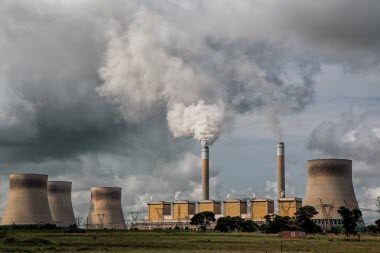Can we help you?
Contact us

Can we help you?
Contact us

Thank you for contacting us
Your form has been submitted successfully Our team will contact you again as soon as possible.
Whooppss...!! An error has occurred
Try sending later or write an email directly to areaempresas@ua.es

 PATENTED TECHNOLOGY
PATENTED TECHNOLOGY
INFO
SHEET
DOWNLOAD
EXECUTIVE
ABSTRACT
CONTACT DETAILS: Research Results Transfer Office-OTRI
University of Alicante
Tel.: +34 96 590 99 59
Email: areaempresas@ua.es
http://innoua.ua.es
The research team “Carbon materials and environment” at the Department of Inorganic Chemistry at University of Alicante has synthesised a noble metal-free catalyst for nitrogen oxides (NOx) storage and reduction (NSR catalyst). The catalyst developed consists of a copper-doped mixed oxide with perovskite structure.
Its major application is the removal of NOx gas in oxygen-enriched streams such us the exhaust gases emitted by diesel engines.

It is well-known that diesel and gasoline engines operate under different combustion conditions, and for this reason, their exhaust compositions are also different. Diesel engines emit oxygen-rich gases and the reduction of nitrogen oxides (NOx) in these conditions is difficult. In these oxygen-rich exhausts the three-way catalysts (TWC), which are successfully used in gasoline engines, cannot operate.
There exist different processes to control NOx emissions in Diesel exhausts, among which the so-called NOx Storage and Reduction Catalysts (NSR catalyst) must be highlighted. The NSR technology works under cyclic conditions of fuel lean and fuel rich environments. Under lean conditions, when oxygen is in excess, NOx is adsorbed on the catalyst, and under rich conditions, when a reductant is added, NOx reduction takes places.
A typical NSR catalyst combines a NOx adsorption material, like an alkali or alkaline earth metal oxide, with noble metals, which catalyse the oxidation of NO under lean conditions and the reduction of the stored NOx under rich conditions. One of the most commonly and effective formulations used as NSR catalyst is Pt-BaO/Al2O3. However, this formulation shows some drawbacks such as the low thermal stability at high temperatures and the formation of barium carbonate in the presence of CO2 (temperature > 450ºC). In addition, barium oxide tends to react with the support, decreasing the NOx storage capacity, and the use of noble metals (such us platinum) makes the application of this NSRC technology expensive.
In order to overcome the stated disadvantages, the Spanish University has developed a new material for optimising the catalyst performance. The invention consists of a mixed oxide with perovskite structure. Its general formula is ABO3, where A is an alkaline earth metal (Ba, Sr, Ca, Mg) and B is a tetravalent transition metal (titanium), partly replaced with Cu.
For the preparation of these mixed oxides, the titanium precursor was dissolved in isopropyl alcohol and dropped into a water solution of citric acid. After that, hydrogen peroxide and citric acid were added until the precipitate was dissolved, following by the addition of A (Ba, Sr, Ca or Mg) and copper nitrates. The solution was evaporated to produce syrup which was dried and calcined.
The amount of NOx stored on these mixed oxides is much higher, when compared on surface area basis, than those of noble metal-containing reference catalysts.
The advantages of this new catalyst formulation are:
• Capability for operating under typical NSR conditions, where the treated gas composition periodically alternates between oxidising and reducing conditions.
• Higher NOx storage capacity per surface area unit (and comparable capacity in mass basis) than conventional noble metal-containing systems.
• Lower cost of the materials in comparison to noble metal-containing formulations.
INNOVATIVE ASPECTS
The main innovative aspect of this approach is that the synthesised material is able to remove NOx in a similar way than noble metal-containing catalysts (the most effective nowadays) but lowering the prize of the materials.
This technology is protected by patent:
• Application number: 201001234
• Application date: 27/09/2010
Engineering, Robotics and Automation
Chemical Technology
Transport and Automotive
Carretera San Vicente del Raspeig s/n - 03690 San Vicente del Raspeig - Alicante
Tel.: (+34) 965 90 9959




